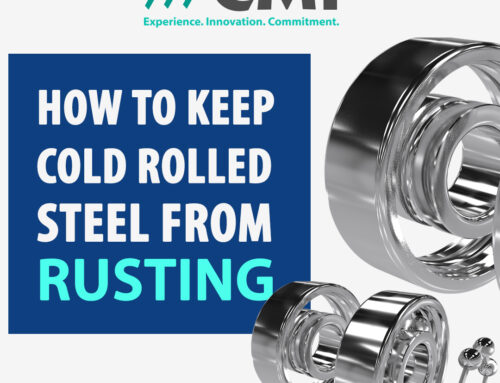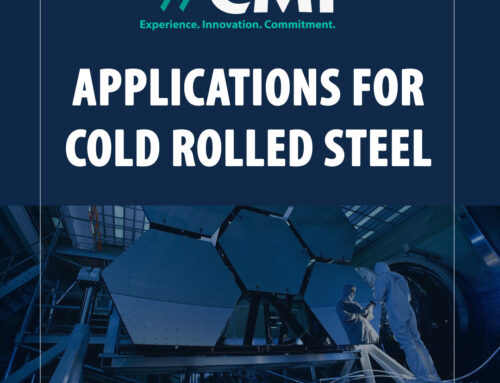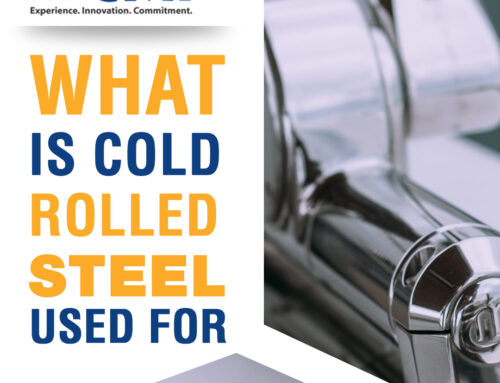
Sheet metal is used in a vast range of finished products we use daily, from tractors to household appliances, flatware, cars, and other commodity products.
Sheet metals are metal that has been shaped into thin, malleable metal sheets while retaining the metal surface’s structural integrity and strength (unlike foil).
Aluminum, stainless steel, hot rolled steel, and cold rolled steel are the main four types of sheet metal. The common types of variables are the strength, hardness, resistance to corrosion thickness, and appropriate application of each of these distinct categories.
Processes of metal fabrication include cutting, rolling, forging, engineering, bending, sheet metal braking, galvanizing, assembling, welding, painting, prototyping, press forming, conductive coating, powder coating, zinc coating, cosmetic coating, sheet metal stamping, laser automation, sheet metal turret punch, riveting, machine design, sub-contract manufacturing, and technical drawing.
One of the most critical steps of metal fabrication is identifying the proper metal surface that can be manipulated to shape a specific angle or complex shapes. The proper metal surface identification is made by applying certain folding applications with the intention to fold the proper metal surface to a 90-degree angle.
Cold Rolled Steel

Cold rolled steel is produced by a rolling process that takes place at room temperature. As the name implies, it is pressed into a sheet shape in a cold state.
Using a cold process increases sheet metal strength by up to 20%. Cold-rolled steel is economical and simple to work with.
Applications that use cold rolled steel:
Cold-rolled steel is best used when the applications require a finished shiny appearance as it offers a far better appearance than hot-rolled steel.
School lockers, filing cabinets, metal furniture, and home appliances are all examples of where it is used.
Cold rolled steel is a common building material for garages, industrial structures, and steel sheds.
Hot Rolled Steel
On the other hand, hot-rolled steel is steel made by applying heat to rolling steel. The process of application of heat on the rolling steel makes the steel flexible to shape a manufacturable design. This metal is more difficult to work with than cold-rolled steel, although it can be easily handled in sheet form.
Hot rolled steel, like cold rolled steel, may be made quickly and affordably. However, the surface flaws of this steel render it unsuitable for anything that requires a smooth, beautiful surface finish.
Applications that use hot-rolled steel:
The hot-rolled steel is the common choice for Art sculptures when Stainless steel isn’t an option. It is also used in automotive seat frames. Sheet metal, rail lines, cross sections, and I beam cross sections are examples of structural components that would use this type of material.
Because of its strength and flexibility, it is commonly used in agricultural equipment.
Stainless Steel

Stainless steel is a metal alloy that combines two base metals- steel and chromium. This metal alloy resists corrosion and rust, making it an ideal material for more demanding applications.
Stainless steel is easy to weld and has a nice polish. It also requires less upkeep as it ages.
Applications that use Stainless Steel
Art sculptures prefer to use stainless steel but can use hot-rolled steel, as previously mentioned. Because of its strength, flexibility, and corrosion resistance, it is often utilized in construction.
Structural components, grills, trim, and exhaust systems all use this material. Another common area to find stainless steel is for medical purposes. Such as plates and pins used to hold shattered bones together, surgical implants, MRI scanners, and dental devices. You will find stainless steel in the kitchen, from appliances to cutlery, sinks, and even counters. It is very popular inside commercial kitchens. It is easily cleaned and disinfected. It also produces pipes, valves, storage tanks, and other components.
Aluminum

One of the most prevalent forms of sheets of metal is Aluminum. Aluminum, like stainless steel, is resistant to rust and corrosion. It’s also lightweight and sturdy, making it suitable for many uses.
Applications that use Aluminum:
The lighter weight of Aluminum makes it very appealing in some applications. The use of it in transportation, for example, is relatively high. When weight matters, Aluminum is the best choice.
Because of its low density and corrosion resistance, it is used in long-distance power lines.
Aluminum is used to create buildings because it requires little maintenance and is thermally efficient, keeping the buildings warm in the winter and cool in the summer (plus, it has a smooth finish and can be curved or cut in any shape) Aluminum is used in consumer electronics, including flat-screen televisions, laptops, tablets, and smartphones. It can also be found in LED lighting, satellite dishes, television antennas, power systems, appliances, and motors.
Other common metals that can have sheet metal fabrication are carbon steel, bronze, copper, magnesium, and brass. Carbon steel is easy to form and reasonable in cost.
Metal Sheet Thickness
The thickness of metal sheets is a major factor. The metal sheet thickness and metal types of sheet metal might vary. The most typical sheet metal thicknesses are less than 1/4″ thick.
A turret punch is used for thick sheet metal in the preliminary step. This thicker piece of metal is usually 3/16″ thick or more and is referred to as a plate.
When a piece of metal is thinner than 3/16″, it will be classified by thickness. Usually, this thickness is translated into “gauges.”
Applications for Sheet Metal in General
The sheet metal fabrication process has a wide variety of applications and purposes, though many people associate it with industrial applications such as oil drilling, mining, and heavy machinery. However, the applications for sheet metal fabrication are far more diverse. Let’s take a look at some of the more popular sectors that use fabricated sheet metal.
Automobile Repair
Metal is essential in the automotive industry, particularly in constructing vehicles capable of lasting hundreds of thousands of miles. Businesses that repair cars, however, require access to sheet metal fabrication services. Cars needing restoration and repair need installing new metal parts throughout the vehicle, from the external body to the interior and undercarriage. You will find fabricated sheet metal throughout automobiles.
These sections must often have specific measurements to accommodate the car’s current skeleton. The custom sheet metal fabrication process enables complete repairs built on the vehicle itself, allowing cars that would otherwise be totalled to be repaired. Metal fabricators can also create duplicate spares and uncommon automotive parts, which saves time.
Building and Agriculture

Metal is frequently used in the framework of strong buildings, and some buildings are entirely built of metal. Specific pieces and parts are required to construct an architectural marvel or a well-designed building. Metal fabrication processes allow you to receive the exact sheets, supports, and metal beams required for the project. It also allows the material to be customized to that particular application.
Some buildings are also works of art, necessitating the precision in production provided by laser cutting, a typical metal manufacturing technology. The advanced metal fabrication processes are adaptable services that can deliver everything from exquisite external elements to the plates and bolts that keep everything together.
Medical Applications

While you will find metal in the buildings of the medical facilities, you will also find it in the applications used in the medical industry. Many pieces of medical equipment, such as complicated machinery and operating tools, are made of fabricated sheet metal components. Metal surgical instruments may be manufactured to precise and accurate dimensions and ordered in quantity, ensuring that hospitals never run out of crucial tools.
Furthermore, medical innovations occur on a daily basis, resulting in the development of new tools with specific capabilities for specific operations and inspections, as well as the creation of new machines and even surgical robots. The pioneers behind this medical research require precision instruments made from sheet metal materials.
Transportation
The transportation sector encompasses everything from international freight to railways and even semi-trucks you see daily. The durability and performance of transportation vehicles are a major concern in this industry. Metal manufacturing is critical to maintaining transportation service productivity. It can help with everything from railroad maintenance to building storage containers.
Custom metal fabrication’s versatility allows it to make many specially designed and formatted pieces, such as fasteners, plates, and the exterior components of vehicles. Do you require a specific or unusually sized container? Metal fabricators can create exactly what you require, all with the goal of facilitating transportation.
Office Components

Sheet metal is often used in various office components, from monitors to the housings in your computer. If you have filing cabinets, you might also find a piece of sheet metal used in their construction and the metal dividers you find in office buildings to the actual build itself. Office space has a fabricated sheet metal need for a variety of reasons.
The Manufacturing Process
A sheet metal fabricator fabricates a piece of sheet metal from raw materials and finishes each piece to the appropriate requirements.
Sheet metal fabrication processes often entail burning and cutting (plasma cutting, water jet cutting, and laser cutting)the sheet metal before it is rolled out and completed. Sandblasting is frequently used to finish sheet metal before painting and priming the end product. Before the sheet metal is inspected and transported, any customized elements described in the customer’s specifications are applied as the final stage.
Because sheet metal is the beginning point for a wide range of other machining processes, quality sheet metal fabrication may serve a variety of industries. These industries use sheet metal, as we have discussed previously in this write-up, which is pretty vast.
The processes of sheet metal fabrication projects are required for anything from industrial furnishing to the office at some point in the manufacturing process. You will find fabricated sheet metal in a variety of materials like appliances, barbeques, automotive, building materials, and more. Sheet metal fabrication service also benefits cutting-edge technology companies such as solar power generation and telecommunications.
You should contact a qualified fabricator if you have an application requirement needing sheet metal fabrication. The benefits of using sheet metal are that it is easy to work with, usually has quick turnaround times, and is a very affordable material to build with. Sheet metal comes in a few different materials with different properties to meet the wide selection of application needs.
Apart from these industries, metal fabrication processes are useful in other industries like the shipping industry, electronics industry, pro-type industries, medical device industry, and other manufacturing industries of commodity products, engineering tools, and universal tools.







![Ballistic Materials: All You Need To Know [2022]](https://custommaterials.com/wp-content/uploads/2022/05/featured-image-Balistic-Materials-500x383.jpg?x26279)